3D on the Web
Created by Denis Grigor
What is 3D?

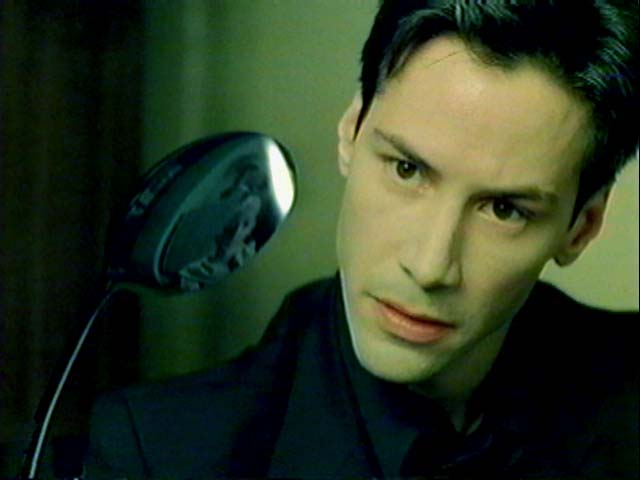
There is no spoon 3D on a screen
All you see is just an illusion a projection.
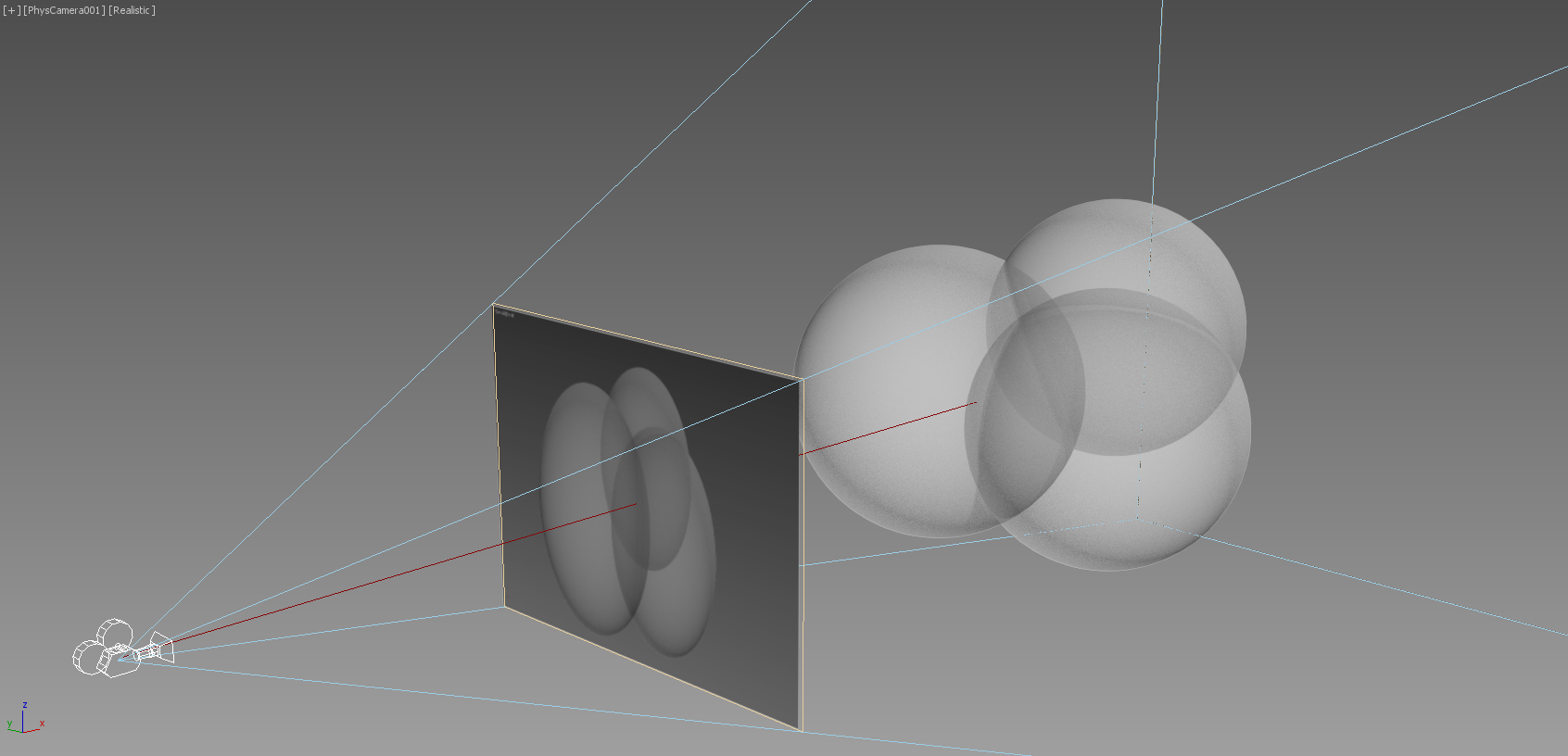
- from of an imagined 3D content
- to a 2D array of pixels
An Ancient Renderer [1525]
from Computer Graphics: Principles and Practice, Third Edition
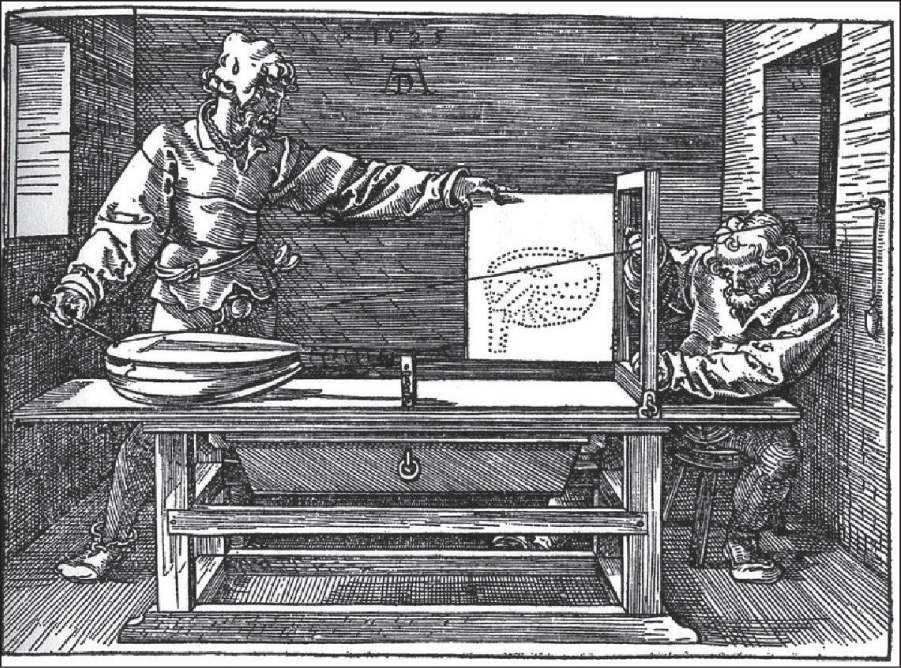
CPU vs GPU
GPU for the Web.
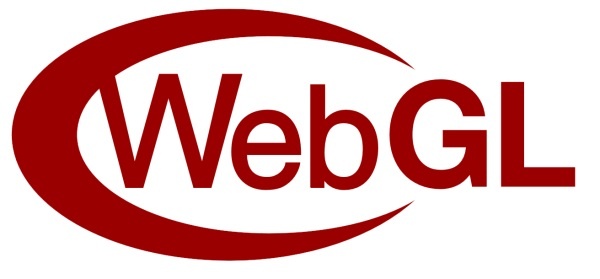
- Meant for browsers
- OpenGL ES2.0 port built into the <canvas> DOM element
WebGL
programmable
graphics pipeline

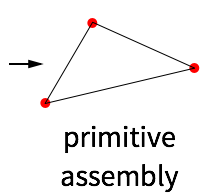
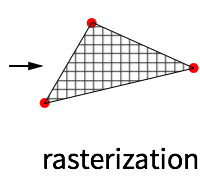

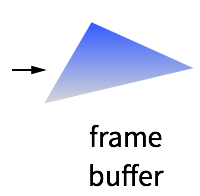

WebGL
programmable
graphics pipeline
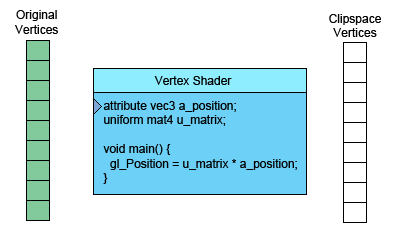





WebGL 101
Setting up the scene with a canvas and a background
var canvas=document.getElementById('webgl_101');
canvas.width = window.innerWidth;
canvas.height = window.innerHeight;
var gl = canvas.getContext('webgl'); // vs 2D
// background color
gl.clearColor(0.0, 0.4, 0.8, 1.0);
gl.clear(gl.COLOR_BUFFER_BIT);
WebGL output
//2D points with direct screen coordinates
var vertices = new Float32Array([
0, 0.9,
0.9, -0.6,
-0.9, -0.6
]);
Vertex Shader
// vertex shader
var vertexShader = gl.createShader(gl.VERTEX_SHADER);
gl.shaderSource(vertexShader, [
'attribute vec2 position;', // pass in attribute
'void main() {', // every shader needs a main func
'gl_Position = vec4(position, 0.1, 1.0);', // set a position
'}'
].join('\n'));
gl.compileShader(vertexShader);Fragment Shader
// fragment shader
var fragmentShader = gl.createShader(gl.FRAGMENT_SHADER);
gl.shaderSource(fragmentShader, [
'precision highp float;',
'uniform vec4 color;',
'void main() {',
'gl_FragColor = color;',
'}'
].join('\n'));
gl.compileShader(fragmentShader);Bind the shaders together, draw vertices etc
var program = gl.createProgram();
gl.attachShader(program, vertexShader);
gl.attachShader(program, fragmentShader);
gl.linkProgram(program);
var vertices = new Float32Array([
0, 0.9,
0.9, -0.6,
-0.9, -0.6
]);
var buffer = gl.createBuffer();
gl.bindBuffer(gl.ARRAY_BUFFER, buffer);
gl.bufferData(gl.ARRAY_BUFFER,new Float32Array(vertices),gl.STATIC_DRAW);
gl.useProgram(program);
program.color = gl.getUniformLocation(program, 'color');
gl.uniform4fv(program.color, [0, 0, 0, 1.0]);
program.position = gl.getAttribLocation(program, 'position');
gl.enableVertexAttribArray(program.position);
gl.vertexAttribPointer(program.position, 2, gl.FLOAT, false, 0, 0);
gl.drawArrays(gl.TRIANGLES, 0, vertices.length / 2);Just 99.9 lines of code!
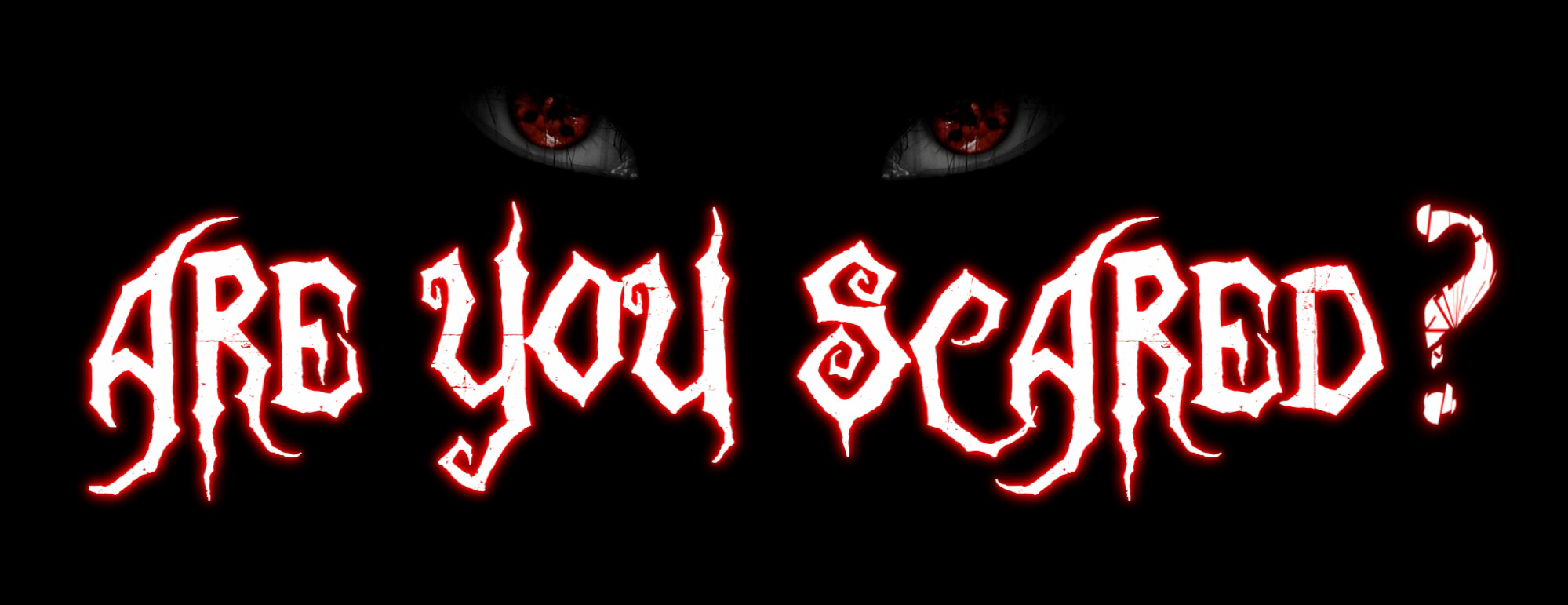 http://webglfundamentals.org/
http://webglfundamentals.org/Khronos Group
WebGL report
Super cool example
WebGL based tools
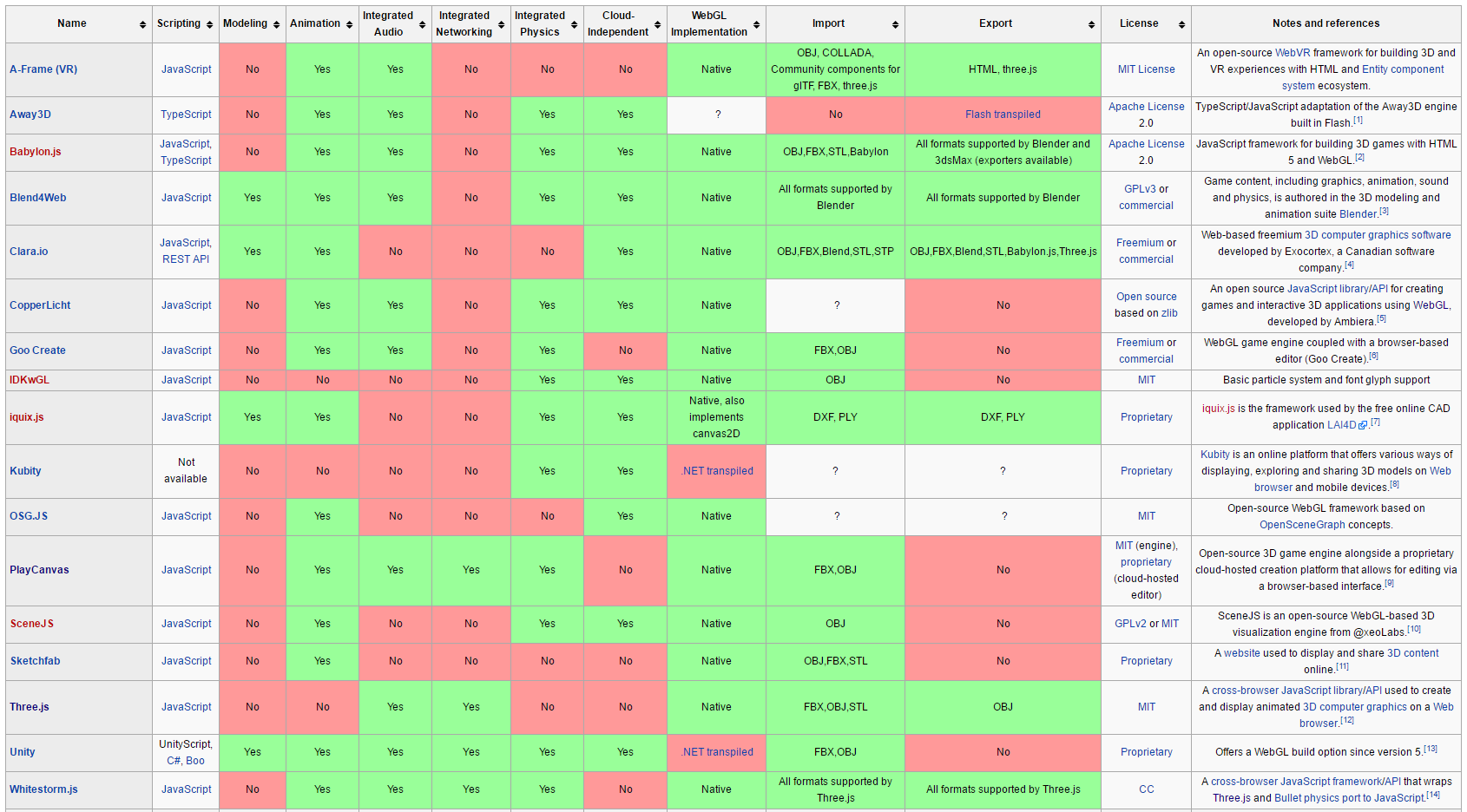
three.js
Abstracts away triangles and related complexities of GL programming
Into actual objects and things in space
var cylinder = new THREE.Mesh(
new THREE.CylinderGeometry( 100, 100, 200, 32 ),
new THREE.MeshBasicMaterial( {color: 0x2194ce} )
);Getting Started
- scene, camera, renderer, controls
- put stuff in the scene
- animate
setup();
fillScene();
animate();function setup(){
scene = new THREE.Scene();
camera = new THREE.PerspectiveCamera( 45,
window.innerWidth / window.innerHeight,
0.1, 1000 );
renderer = new THREE.WebGLRenderer({alpha:true});
var intro_place = document.getElementById("three_js_101");
intro_place.appendChild( renderer.domElement );
renderer.setSize(400,200);
}function fillScene() {
var material = new THREE.MeshBasicMaterial( { color: 0x3166bc,
wireframe: true } );
var geometry = new THREE.IcosahedronGeometry(20, 4);
sphere = new THREE.Mesh(geometry, material);
scene.add(sphere);
camera.position.z = 60;
camera.lookAt(new THREE.Vector3(0,0,0));
}Animate
- requestAnimationFrame();
- Computer rendered animation needs to be 60fps to be seamless for human eye (contrary to 24fps for film)
-
Call
animate()every time browser refreshes
function animate() {
sphere.rotation.y += 0.01;
requestAnimationFrame( animate );
renderer.render( scene, camera );
}Easily add controls
var controls = THREE.OrbitControls(camera, renderer.domElement);
}What about material?
var material = new THREE.MeshBasicMaterial( { color: 0x3166bc,
wireframe: true } );
}vertex_shader = `
varying vec2 vUv;
void main()
{
vUv = uv;
gl_Position = projectionMatrix*modelViewMatrix*vec4(position, 1.0);
}`
fragment_shader = `
varying vec2 vUv;
void main()
{
gl_FragColor = vec4( vec3( vUv, 0. ), 1. );
}`
var material = new THREE.ShaderMaterial( {
vertexShader: vertex_shader,
fragmentShader: fragment_shader, wireframe: true});
All you need is love three.js
- support for primitive geometries
- available loaders for different formats
- support for lights and shadows
- support for textures
- shader access !!!
What it takes to create a 3D viewer?
Pseudocode for creating cool things

Interactive 3D Graphics Course
Let us see some cool things!
Sketchfab
"Customizable shopping"
CL3VER
Augumented shopping
Holo-review
and some even more useful things
 |
 |
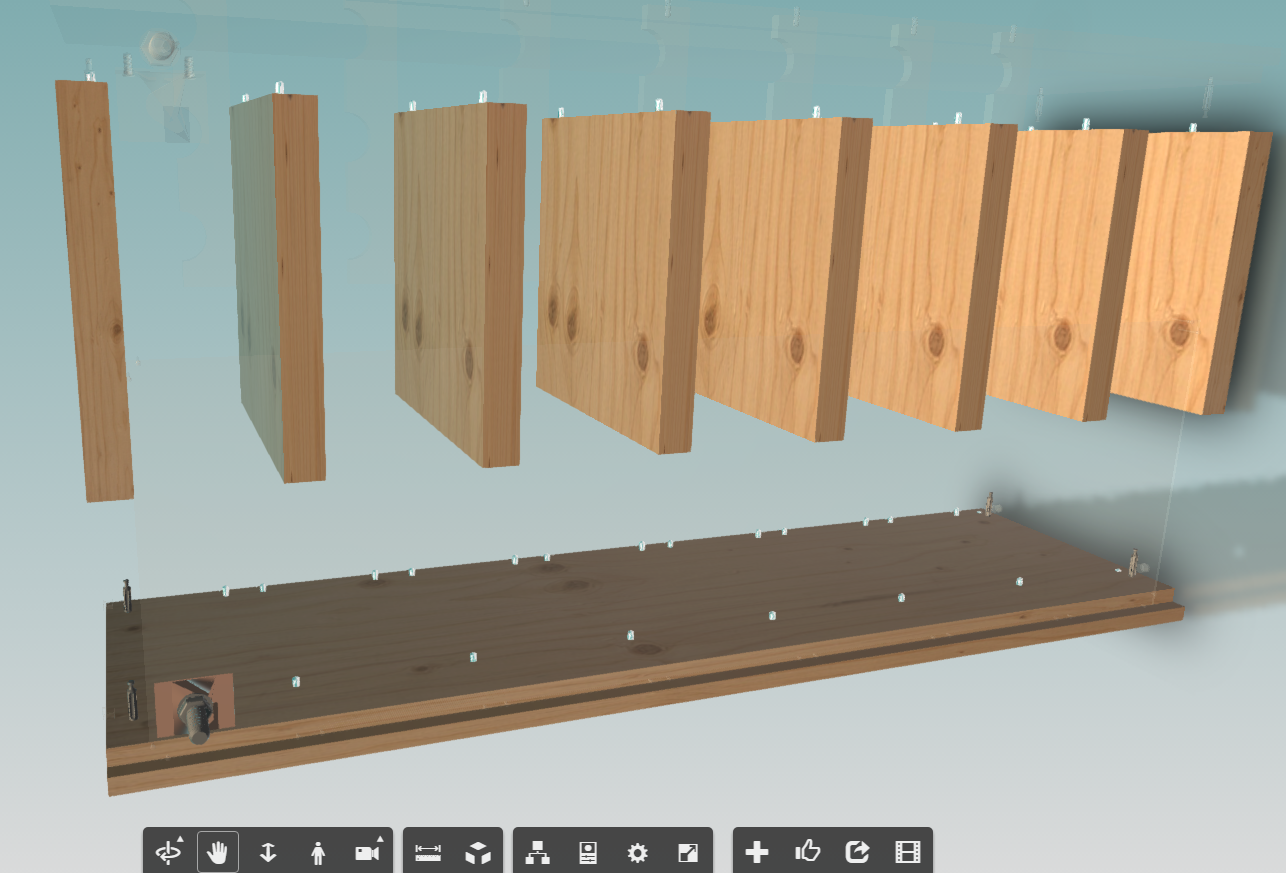 |
|---|---|---|
| What Amazon could look like with 3D | How a realtor website could look with 3D | How an assembly instruction could look with 3D |